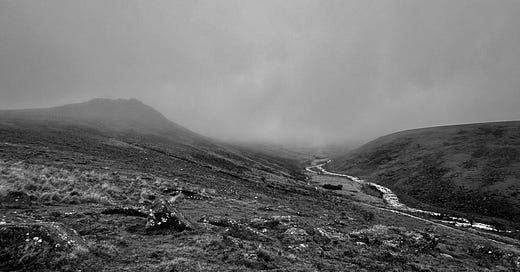God Waits in Darkness and the Wilderness Guards the the Dead
A Memoir of the Occupation, Chapter 2
They came from England, from the West Country. My people, that is. I’ve always known it. In fifth grade we were told of the Great Mosaic. Americans, the teacher babbled (glancing at the script supplied by the Department of Education) are a nation of immigrants who fled the awfulness of the old world and conceived on this continent a new people and a new nation where all would be equal.From which of those horrible old world hellholes did your immigrant ancestors flee for the promise of the American Dream? England, I said. As did every other kid in the class, but for one girl who claimed Ireland.
This was the mid-Seventies, a public high school (sixty-odd in my senior class) in a small town in the rural South. Before Braveheart, when millions discovered they were sons of the old sod. There was one Italian family, one or two with German surnames. Soccer got popular in early 1980s. The Spanish teacher, also the soccer coach, went to Mexico one summer and returned with two “transfer student…
Keep reading with a 7-day free trial
Subscribe to A Memoir of the Occupation to keep reading this post and get 7 days of free access to the full post archives.


